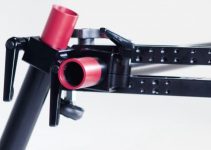If you are looking for a debate that will likely last the next few months, look at some early comparisons between the Canon EOS R5 and the soon-to-be-announced Sony a7S III.
Obviously, since it isn’t yet official, details on the a7S III are based on rumors and leaks as opposed to info direct from Sony, but that doesn’t mean we can’t have some fun. Both cameras are looking to be outstanding when it comes to video, so it may turn into a serious battle for your cash very soon.
Max Yuryev always has a good eye for these types of things and is definitely all for taking a look at Sony’s leaks and comparing them to the known Canon EOS R5 info. I will point it out again, nothing here is 100% confirmed and is based on Yuryev’s research and opinions on the subject.
Starting off in an interesting place, Yuryev takes a look are pricing. We know the R5 costs $3,900, which isn’t cheap. He is expecting (hoping?) that the next a7S will come in around $3,000. This is what the current a7S costs, so it makes sense in a way, but Yuryev points out that if more features are packed in that the price might get pushed up to $3,500 or more.
Time for image quality thoughts. This all starts with the sensor choice, and the older a7S models offered smaller 12MP sensors with giant pixels for better sensitivity. In a DPReview interview, Sony revealed that the S should now represent “Supreme,” though they still are offering bigger pixels.
Yuryev reads into this to mean that the a7S III will stick to 12MP, but that they have room to bump up to 24MP if they want. Compared to the R5’s 45MP, the a7S will certainly offer better low-light performance, but will slack when it comes to overall resolution and viability for stills. The lower resolution also means no more than 4K resolution, compared to the R5’s 8K options.
If Sony wanted to increase the resolution, they could still use tricks to maintain that killer low-light performance. One option is a dual native ISO – much like the sensors used in true cinema cameras.
Another choice is based on sensor architecture. Yuryev points out back-side illuminated designs and believes the a7S III will offer that for sure. Canon doesn’t seem to offer either of these options, meaning the a7S will stay king here.
On to stabilization. The R5 wowed here with a new 8-stop IBIS system that seems to perform super well for video specifically. Sony has been good in this arena, but perhaps not perfect when it came to walking around in video. The hope is that this is improved, though there is no information to say one way or the other.
Resolution is next and was addressed a bit earlier with sensors. Yuryev seems confident that the new sensor will not break 24MP, meaning at best we are looking at 6K possible. He says that 4K only is most likely. Compared to the EOS R5 and it’s impressive 8K recording and 4K up to 120p, the a7S III has some stiff competition here.
The a7S also seems to have at least 4K 60p, with another wish that it will match the 4K 120p spec of the R5. Need maximum resolution? Canon has the win.
How about slow motion? Well, Canon did it well with 4K 120p recording and a potential upgrade for Full HD 120p incoming. We just talked about how Sony might hit 120p in 4K, though going to Full HD Yuryev is thinking that it might be faster since the a7S III will likely have a lower resolution.
If you do want even more Full HD shooting, that low resolution can help produce better Full HD video since the camera can downsample from a more reasonable resolution.
Now for something that is a pure guess: dynamic range! We do know Canon is offering 10-bit recording with original Canon Log. The spec on that means that it will only produce about 12 stops. It’s a little disappointing. Compared to Sony who bundle in S-Log2 and S-Log3, it seems likely the next a7S will offer at least 14 stops of dynamic range in Yuryev’s opinion.
The problem has always been the 8-bit limit on Sony cameras and the codec. Of course, if you opt for 8K raw from Canon you might get better dynamic range, though it’ll fill up your expensive media real quick.
Most likely, Yuryev suspects the a7S III will have a new HEVC codec with 10-bit support. That’ll help a lot. To compare raw video options, based on the DPReview interview, it seems like raw will not be internal, like Canon can do. If it even happens it will be output only.
If we are talking raw output, it’ll probably work with Atomos like the FX9 will, for ProRes RAW. This would be solid as it does offer great performance and support is growing for the format. 8K raw from Canon will be rough on your PC.
Recording limits are another sticking point for video-oriented cameras. The R5 still has some limitations – plus you have to account for overheating. Rumors say Sony’s camera will not have a limit. Considering the other recent Sony releases haven’t had this limit it seems like a sensible assumption.
As for overheating… we do know the Canon EOS R5 has some limitations there. Canon even published a document that said 8K recording will be limited to 20 minutes and 4K 60p or high-quality 4K 30p will be around 30 minutes. Plus cool down times before hitting record on even shorter clips. It could be a struggle. No real guesses on the Sony, hopefully it is something that is addressed in the camera design.
That brings us perfectly into the body updates. The R5 and a7S will likely be similar in size and have an articulating screen. At least, it better have an articulating screen. It’ll probably look close to earlier Sony cameras, too.
Still a lot of unknowns and none of this is officially confirmed, but it is interesting. I think if you are looking for a solid all-around camera, the supposedly higher resolution sensor of the R5 will be a good bet. However, video only, wait and see what the a7S III might have to show us.
[source: Max Yuryev]
Order Links:
Disclaimer: As an Amazon Associate partner and participant in B&H and Adorama Affiliate programmes, we earn a small comission from each purchase made through the affiliate links listed above at no additional cost to you.
Claim your copy of DAVINCI RESOLVE - SIMPLIFIED COURSE with 50% off! Get Instant Access!




